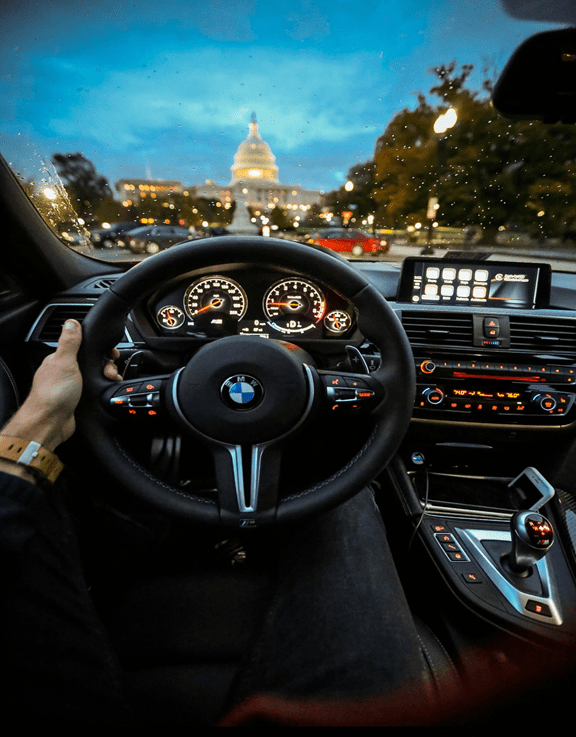Advanced Steering and Automotive
In today’s rapidly changing automotive environment, innovation is at the forefront of revolutionizing steering and automotive components, ushering in a new generation of driving experiences equipped with features that enhance performance, safety and environmental sustainability. This article takes an in-depth look at various aspects of innovation in steering and automotive components, which are shaping the modern automotive industry.
1. ELECTRIC Power Steering (EPS) Systems
The transition from the traditional hydraulic power steering system to the electric power steering (EPS) system has been a milestone. EPS systems provide steering assistance with the help of electric motors, which offer several advantages over their hydraulic counterparts. These systems provide a more agile and fuel-efficient driving experience by contributing to improved fuel economy, weight reduction and faster feedback response. In addition, EPS allows automakers to seamlessly integrate the latest driver assistant features, further enhancing vehicle safety and convenience.
2. Latest Sensor Technologies
The integration of the latest sensor technologies is revolutionizing steering precision and control. Torque sensors, angle sensors and position sensors play an important role in modern steering systems, facilitating precise steering adjustments and adaptive assistance according to driving conditions. These sensors not only improve driving dynamics but also form the basis of intelligent driver assistance systems such as lane-keeping assistance, adaptive cruise control and automatic parking, thereby elevating both safety and convenience for drivers. .
3. Drive-by-Wire Technology
Driver-by-wire (DBW) technology is a radical change in the field of steering, eliminating mechanical connections and paving the way for electronic control systems. By separating the steering wheel from the wheels, the DBW system allows for seamless integration with customizable steering settings, adaptive steering ratio and automated driving features. This technology gives drivers greater flexibility and control over steering characteristics, as well as paving the way for future innovations in automated vehicle navigation and control.
4. Steer-by-Wire Systems
Steer-by-wire (SBW) systems are the pinnacle of electric steering developments, replacing traditional steering components with fully electric actuators. SBW systems offer unprecedented versatility in customizing steering feel, rewarding drivers with adjustable feedback settings and adaptive response capabilities. In addition, these systems enhance the safety of the vehicle through dual steering mechanisms, which ensure the ability to drive continuously even in the event of component failure. SBW technology is poised to play an important role in shaping the future of automated driving and human-machine interface (HMI).
5. Innovation in Content
The adoption of lightweight materials such as carbon fiber composites and high-strength alloys is revolutionizing the design of automotive components including steering systems. Lightweight materials contribute to a total reduction in vehicle weight, resulting in improved fuel economy and dynamic performance. In addition, these materials offer exceptional durability and structural integrity, increasing the lifespan and reliability of steering components while meeting stringent safety standards.
6. Connectivity and Integration with Artificial Intelligence
The integration of steering systems with vehicle connectivity and artificial intelligence (AI) capabilities opens up new avenues for improved performance and increased functionality. Integrated sensors and AI algorithms enable predictive maintenance, real-time data analysis for optimal steering performance and adaptive driving modes tailored to individual preferences. In addition, connectivity features facilitate “over the air” updates and remote diagnostics, ensuring continuous system improvement and accountability.
7. Innovation in Safety
Safety is a top priority in automotive design, and steering innovations have played an important role in increasing vehicle safety. State-of-the-art safety features such as Electronic Stability Control (ESC), Adaptive Steering Assist and collision avoidance systems are seamlessly integrated into the advanced steering system. These innovations reduce risks, improve vehicle stability and help drivers cope with difficult driving situations, resulting in reduced chances of accidents and increased passenger safety.
8. Automatic Driving
The advent of automated driving technologies is reshaping the automotive landscape, with steering systems playing an important role in enabling automated navigation and control. Innovations such as steer-by-wire capabilities, sensor fusion for precise positioning and artificial intelligence-driven decision-making algorithms are integral to the development of autonomous vehicles. These developments promise that hands-on driving in the future will not only be feasible, but also safer and more efficient, revolutionizing transportation systems around the world.
9. Human Machine Interface (HMI)
Advances in human machine interface (HMI) design are improving driver interaction with steering controls and vehicle systems. Intuitive interfaces incorporating touchscreens, haptic feedback, voice commands and body gesture recognition simplify driver inputs, reducing distraction and increasing overall driving comfort. HMI developments prioritize the user experience, promoting a safer and more engaging driving environment while facilitating seamless integration with infotainment and connectivity features.
10. Environmental Sustainability
In the face of growing environmental concerns, automotive manufacturers are prioritizing sustainability in designing steering and automotive components. This includes the use of environmentally friendly materials, recyclable components and energy efficient manufacturing processes. Sustainability initiatives go beyond product design to cover lifecycle considerations, promoting responsible use and minimal impact on the environment during the vehicle’s lifetime.
Result
A constant wave of innovation in steering and automotive components is reshaping the direction of the automotive industry, driving advances in efficiency, safety and environmental responsibility. From electric power steering system to automatic driver.

